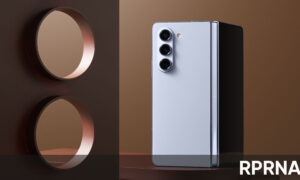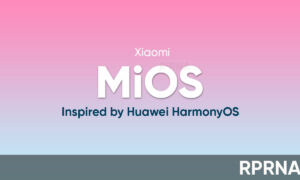At today’s 2022 Innovation and Intellectual Property Forum, Huawei announced the major inventions that won awards in its biennial “Top Ten Inventions” selection event.
Fan Zhiyong, head of Huawei’s intellectual property department, said that in 2021, Huawei broke the convention and awarded the “Top Ten Inventions” award to 11 major inventions, because based on the voting results, two inventions were tied for the number of votes.
The first award-winning invention is a new additive neural network. This invention can reduce computing power consumption and circuit area by 70% under the premise of ensuring accuracy. The related technology can be widely used in the various terminal equipment, consumer electronic products, smart cars, and telecommunication networks.
JOIN US ON TELEGRAM
The second winning invention is a multi-objective game algorithm. The invention addresses some of the key challenges in autonomous driving, including localization, perception, and decision-making in complex scenes where people and vehicles are mixed on urban roads. This invention solves more than 70% of the difficult cases of taking over the interactive scene, shortens the transit time by 40%, reduces the storage cost by 200 times, and reduces the computing power consumption by more than 85%.
The third award-winning invention was the optical iris. The passive nature of optical fiber makes its management very difficult. This patent helps operators to accelerate the deployment of fiber broadband by engraving optical iris on the optical fiber as a biological label of the optical fiber, reducing the waste of resources by 30% and reducing the operating cost by 20%.
 The fourth winning invention was full-precision floating-point computing. This invention realizes the fusion of high-efficiency and high-precision computing power and solves the floating-point computing needs of multiple scenarios such as high-performance computing and AI inference. The invention has already been cast in the Ascend chip.
The fourth winning invention was full-precision floating-point computing. This invention realizes the fusion of high-efficiency and high-precision computing power and solves the floating-point computing needs of multiple scenarios such as high-performance computing and AI inference. The invention has already been cast in the Ascend chip.
The fifth award-winning invention is the head-up display system. This invention solves the ghosting, dizziness, and dizziness problems of the smart car head-up display system, greatly reduce the size, frees up computing resources, reduces latency, and enables consumers to see clearly, affordably, and have a good experience.
The sixth winning invention is Deterministic IP. This invention enables deterministic low latency and low jitter for large-scale packet networks. Based on this invention, Huawei released a deterministic IP network solution that enables remote industrial control with microsecond precision.
The seventh winning invention is the kite scheme. The invention enables operators to deploy remote core networks or “kite networks” on their enterprise customers’ campuses, meeting the high reliability and security requirements of industries such as manufacturing, mining, and education.
The eighth winning invention is the BladeAAU and Massive MIMO scheme. This invention addresses key challenges for indoor and outdoor 5G deployments. Outdoors, BladeAAU helps customers deploy 5G networks in a simplified manner while ensuring optimal network performance of different standards; indoors, distributed MIMO technology can greatly improve 5G network capacity and user experience.
The ninth winning invention is the 5G Single Air. As a technology that has been incorporated into the 5G standard, this invention allows the network to use more shared spectrum resources, increasing the share of 5G cross-standard spectrum resources from 40% in the 4G era to 90%. Based on this invention, Huawei has realized the industry’s only millisecond-level dynamic spectrum sharing commercial capability. So far, this invention has been successfully commercialized in 26 bureaus around the world.
The tenth award-winning invention is active-active network-attached storage. This invention realizes the world’s first symmetric active-active high-end storage system with twice the performance of the industry and can meet the requirements of expansion and zero business interruption in transportation, energy, finance, and other fields.
The eleventh winning invention is the LinkTurbo and Hyperhold. The invention is a pure terminal-side acceleration combination. Using this patent, smartphones can provide users with a smooth experience under various network and memory usage scenarios. LinkTurbo significantly increases concurrent download rates, reducing game latency and video buffering latency, while Hyperhold greatly expands available memory and improves basic read and write performance.










